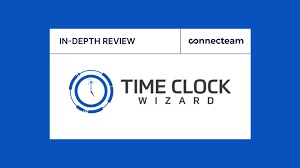As technology continues to reshape communication, digital journalism finds itself at a critical crossroads. Traditional media models are no longer dominant. Audiences now demand faster, more interactive, and deeply personalized content. In the center of this transformation stands SFMCompile, a platform built to understand where the industry is headed. Drawing from ongoing research, platform analytics, and social media behavioral patterns, SFMCompile has formed a comprehensive view of what the future of digital journalism looks like.
This article offers a clear, insightful look into what SFMCompile predicts will define journalism in the next decade. From the rise of independent creators to the integration of artificial intelligence, journalism is no longer simply about reporting news. It is about building trust, engaging audiences, and delivering stories in a format that matches how people live, work, and consume information.
A Move Toward Personalized Journalism
SFMCompile’s analytics show a steady shift toward personalized content consumption. Readers are no longer satisfied with generic headlines or surface-level updates. They expect news that aligns with their interests, values, and professional needs. This signals a growing trend toward algorithmically curated content, but SFMCompile argues it should not end there. True personalization should be ethical, transparent, and audience-first.
In the future, readers will likely subscribe to topic-based journalism streams tailored to their needs. Instead of following one outlet, they will follow specific stories, voices, or regions. This will push digital platforms to invest in better audience segmentation, smarter content delivery systems, and responsible personalization algorithms that do not create information silos.
The Rise of News Creators Over Traditional Newsrooms
The traditional newsroom structure is rapidly evolving. While legacy media still exists, its influence has been challenged by individual content creators who have built loyal communities on platforms like YouTube, Substack, and Twitter. According to SFMCompile’s data, these independent journalists are not just trendsetters. They are re-establishing credibility by offering transparent sourcing, direct communication with audiences, and niche subject matter expertise.
SFMCompile predicts a hybrid future where professional journalists collaborate more closely with content creators, influencers, and niche experts. This will blur the line between formal journalism and digital storytelling. In response, platforms must create tools that support ethical reporting, fact-checking, and monetization models for independent reporters who may not work under a traditional media banner.
Short-Form and Snackable News Will Dominate
People today scroll more and read less. This is a pattern SFMCompile has observed across regions, age groups, and even industries. Short-form video and mobile-friendly formats are quickly replacing long investigative reports for mainstream audiences. While this does not mean long-form journalism will disappear, it does mean the way it is packaged will change significantly.
In the next phase, expect bite-sized news to become the default for general audiences. Infographics, story-style slides, vertical video updates, and audio clips will dominate social feeds. For journalists, this will require a new skill set — one that includes visual storytelling, audio production, and social media strategy.
SFMCompile is already testing compact content formats that condense complex stories into under three minutes, while still linking to in-depth articles for those who want more. The goal is not to oversimplify but to offer multiple entry points into the same story, allowing the audience to engage at their preferred depth.
Artificial Intelligence Will Support, Not Replace, Journalists
There is no denying that artificial intelligence has already entered the newsroom. From grammar corrections to automated summaries and real-time trend detection, AI tools are now part of the journalistic workflow. But according to SFMCompile, the future will not be about AI replacing reporters. It will be about AI enhancing their capabilities.
Machine learning can assist with data analysis, pattern recognition, transcription, and multilingual translation. But the human element — editorial judgment, ethical storytelling, emotional intelligence — will remain central. SFMCompile emphasizes that AI must be a tool, not a storyteller. Algorithms lack context, morality, and human nuance. Journalism that leans too heavily on automation risks losing trust.
To move forward responsibly, platforms must be transparent about AI use in content creation and ensure editorial oversight. The future will be hybrid, where human journalists lead and AI supports in background functions.
Transparency and Trust Will Be the New Currency
In a world flooded with information, trust will become more valuable than reach. Audiences today are skeptical. They have grown tired of clickbait, bias, and sensationalism. According to SFMCompile, the news brands that will thrive are those that prioritize clarity, accuracy, and transparency in their processes.
This means showing the reader how a story was built, where information was sourced, and who is behind the report. SFMCompile predicts a growth in open-sourcing journalism, where audiences are invited to engage with data, challenge assumptions, and contribute insights. Collaborative journalism is on the rise.
Verification badges for journalists, blockchain-backed records for published stories, and user-rated credibility scores could all play a role in shaping the next era of journalism. This may also lead to a renewed focus on digital ethics and platform accountability.
Journalism Will Become More Interactive and Community-Led
The future is not passive. SFMCompile predicts a model of journalism where audiences are active participants, not just readers. Already, we are seeing platforms experiment with community commentaries, real-time reactions, and participatory reporting where readers submit content, eyewitness reports, or questions that shape coverage.
This shift will impact editorial strategy. Reporters will need to engage more directly with the audience. Digital newsrooms will prioritize community managers alongside editors. Community-led journalism will grow, especially in underreported regions, where local voices often go unheard in mainstream coverage.
SFMCompile supports this trend by encouraging inclusive reporting and localized content hubs that amplify diverse perspectives. Journalism will become more democratic, and platforms must ensure they provide tools for safe, moderated, and constructive public participation.
Monetization Will Shift Toward Value-Based Support
With ad revenue models declining and paywalls frustrating many users, the future of journalism funding will likely come from hybrid monetization. Subscriptions, micro-tipping, branded collaborations, and nonprofit models will all play roles. SFMCompile foresees a future where readers support the journalism they value through transparent contributions.
New platforms are experimenting with blockchain-based content ownership, tokenized support models, and reader-funded investigations. Trust and value will drive financial sustainability. The audience will fund stories that matter to them, not just consume for free.
For journalists, this means building strong relationships with readers. For platforms like SFMCompile, it means creating seamless, ethical, and sustainable paths for support that do not compromise editorial independence.
Final Thoughts:
Journalism is not dying. It is transforming. The digital space offers unprecedented opportunities for storytelling, connection, and impact. But it also brings challenges that require thoughtful navigation. From information overload to algorithmic bias, the future is not without its risks.
SFMCompile believes the key to successful digital journalism lies in blending technology with humanity. As we move forward, it will not be about doing more content. It will be about doing better journalism — faster, more transparent, and deeply connected to the audience’s real needs.
In an age of artificial intelligence, misinformation, and constant distraction, journalism’s job is to illuminate, not overwhelm. SFMCompile continues to pioneer this mission — making news smarter, journalism more inclusive, and the future more informed.



